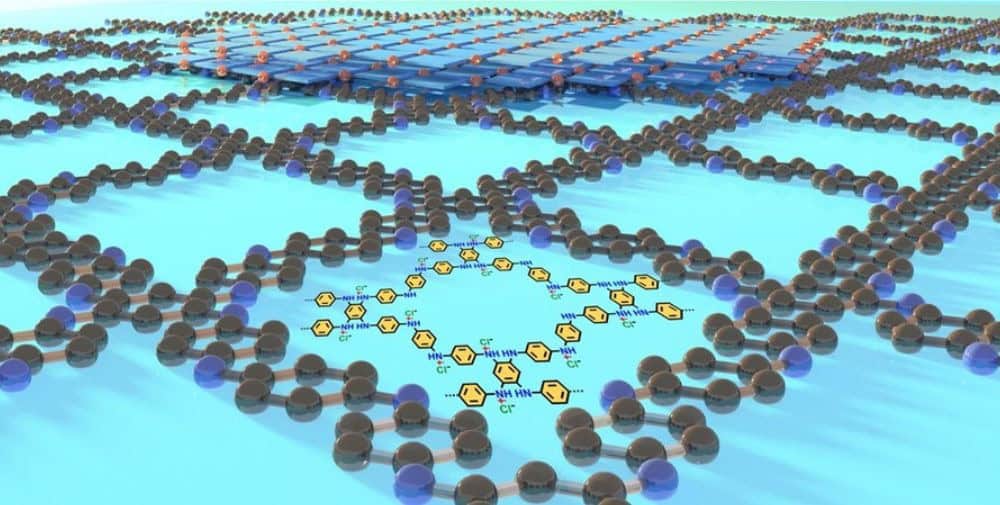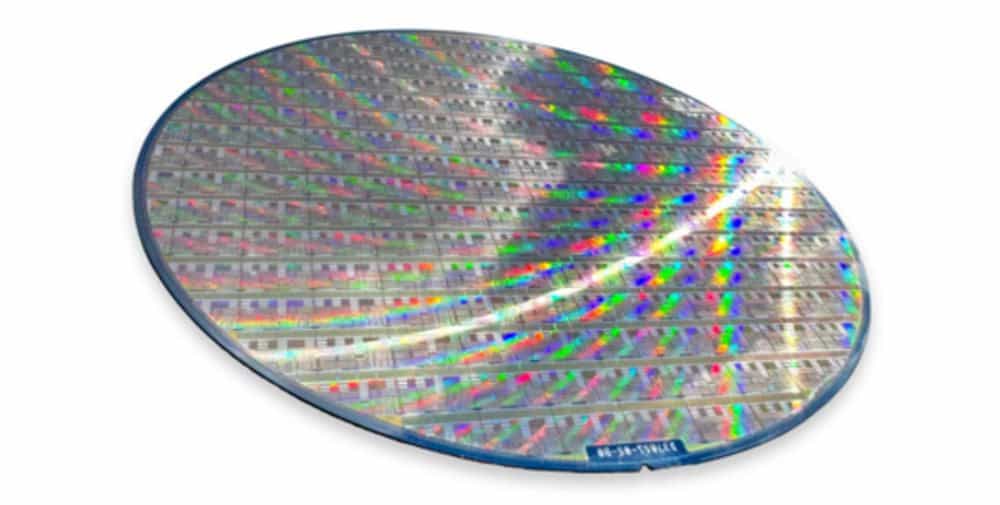
Conducting polymers such as polyaniline, polythiophene and polypyrrole are known for their excellent electrical conductivity and have proven to be promising low-cost, lightweight and flexible alternatives to conventional semiconductors and metals. The importance of these materials was underscored in 2000 when Alan J. Heeger, Alan G. MacDiarmid and Hideki Shirakawa were awarded the Nobel Prize in Chemistry for their pioneering discovery and development of conductive polymers.
Despite significant advances, these materials conduct electrons mainly along their polymer chains. However, the conductivity between the polymer strands or layers remains limited because the molecules are not well connected and the electronic interactions are weak.
To solve this problem, a research team from TUD and the Max Planck Institute of Microstructure Physics Halle, in collaboration with international partners, has synthesized and characterized a multilayered two-dimensional polyaniline crystal (2DPANI). “This material exhibits exceptional conductivity – not only within its layers, but also vertically across the layers. This is what we call metallic out-of-plane charge transport or 3D conduction. This is a fundamental breakthrough in polymer research,” explains Thomas Heine, Professor of Theoretical Chemistry at TU Dresden. Together with his team at TUD and the Center for Advanced Systems Understanding CASUS in Görlitz, he first simulated the structure of the polymer and calculated its metallic character.
Xinliang Feng and his team at the Center for Advancing Electronics Dresden (cfaed) at TUD and the Max Planck Institute of Microstructure Physics in Halle synthesized the new polymer and carried out direct current transport studies. These measurements show an anisotropic conductivity of 16 S/cm in-plane and 7 S/cm out-of-plane – about three orders of magnitude higher than conventional linear conducting polymers. In addition, measurements at low temperatures show that out-of-plane conductivity increases with decreasing temperature – a characteristic behavior of metals – confirming the exceptional metallic out-of-plane electrical transport properties of the material.
Further measurements were performed at CIC nanoGUNE in San Sebastián, Spain using infrared and terahertz near-field microscopy. These revealed a DC conductivity of around 200 S/cm.
This breakthrough opens up the possibility of achieving three-dimensional metallic conductivity in metal-free organic and polymeric materials. This opens up exciting new prospects for applications in electronics, electromagnetic shielding or sensor technology. The metallic polymer could serve as a functional electrode in electrochemistry and photoelectrochemistry, for example for the production of hydrogen.
Original publication
Tao Zhang, Shu Chen, [..], Thomas Heine, Renhao Dong, Rainer Hillenbrand & Xinliang Feng. Two-dimensional polyaniline crystal with metallic out-of-plane conductivity. Nature (2025). https://doi.org/10.1038/s41586-024-08387-9
Contact
Prof. Thomas Heine
Professorship of Theoretical Chemistry
Phone: +49 351 463-37637
Email: thomas.heine@tu-dresden.de
Prof. Xinliang Feng
Professorship of Molecular Functional Materials
Phone: +49-(0)351-463-43251
Email: xinliang.feng@tu-dresden.de
– – – – –
Further links
👉 https://tu-dresden.de
Photo: Peng Zhang



